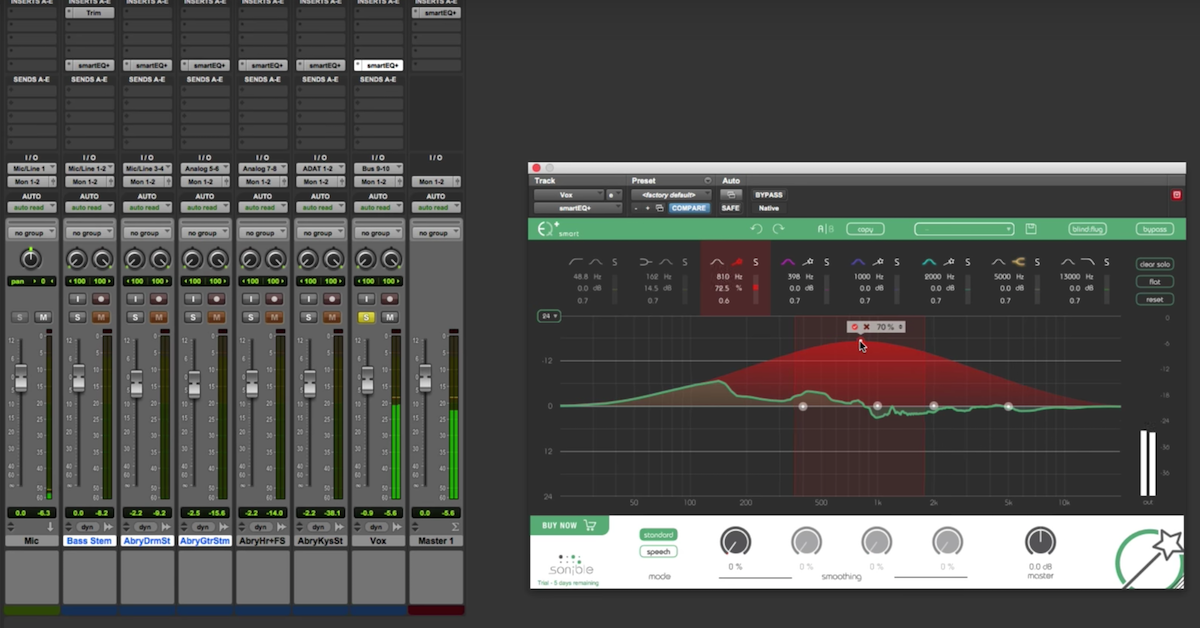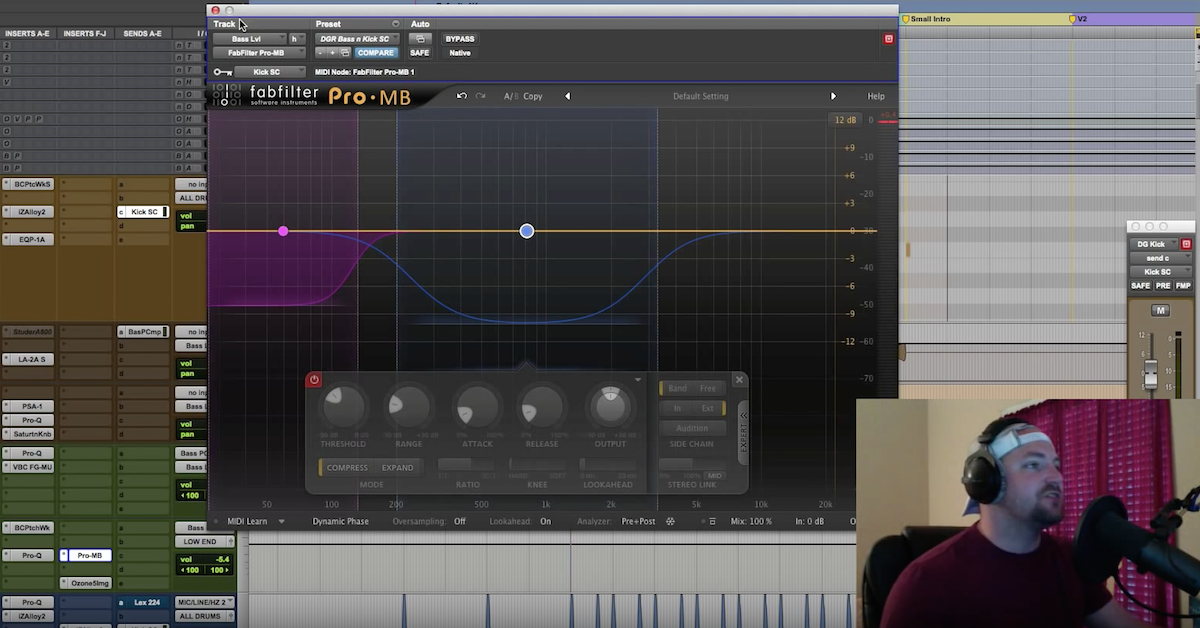How to Accurately A/B Effects with Perception Plugin
This is a follow up video to a tutorial that I made previously about level matching while you’re mixing. If you have any questions at all about level matching, and the whole issue and problem that arises, go back and check out my other video where I go into a lot more detail about that whole problem.
Well, in that previous video, I came up with kind of a trick, or a plugin hack, or a way of jimmy-rigging a plugin that you already have in your arsenal to do automatic level matching for you. Now, it wasn’t the most accurate or precise way of doing it, but for the most part, it worked pretty well.
The way that I came up with was to use the Waves Vocal Rider plugin, where I would bring in the unprocessed signal through the sidechain input, have the plugin analyze it, and then insert the vocal rider plugin actually after my signal chain of processors, whether that’s a channel strip, compressor, equalizer… any kind of plugin you want to use that’s going to change the level if you do things like do an EQ boost in the low-end, or cut it… That’s going to affect the overall output level.
So, what would happen is the Waves Vocal Rider would automatically adjust to set those things. Now, I’ll be the first person to say it was not the most accurate and precise way of doing things, but it worked pretty well.
What I want to show you guys in this video then, is a much more precise and accurate way of doing it, and that is to use a specific plug-in that is designed – its conventional purpose is to do automatic level adjustment. Waves Vocal Rider isn’t necessarily intended to do this, but I kind of came up with a way to do that. So let me bypass these, and talk about this other plugin that does this specific, automatic level matching.
This plugin is called the Perception plugin, and it’s put out by a company called MeterPlugs. Definitely encourage you guys to check out their website, and specifically this plugin is awesome. It has several features to go along with this whole idea of level matching, and A/Bing things back and forth that make it very, very useful.
Now, a lot of people like to use it for mastering, however, I think that it is also just as useful for mixing.
So, this plugin has two parts. There is the source, and there is the controller, and the way that this has to work, is you have the source plugin inserted before your whole signal chain, or whatever processor you’re going to use. It’s going to read in the signal before it ever gets changed, increased, decreased in volume, etc.
So, you put this one first. It doesn’t actually have any controls on it, it’s just a UI interface that you can see that it’s there, and it’s going to read in the important information before anything gets processed, and it’s going to send it over here to the controller plugin that’s going to actually do level matching and stuff like that.
So, as an example, let me go ahead and start playing back some audio through my equalizer right here, and boost up the low-end on this kick drum so that besides just increasing the low frequencies, I’m also going to increase the overall level.
[kick plays]
Alright, so it’s quieter. I add it in, I’m going to be boosting up that low-end.
You can see that the Perception plugin is already starting to read in and say, “alright, there’s a level difference between pre and post effect that can be balanced.” One thing that I’ve noticed though, is that when I start to do this balance, right off the bat, it’s going to give me some warning that says you need to think about whether you want to increase the gain by this much.
So, for now, I’m going to actually say no, and come back to this. The thing that I’ve noticed is that my reference level should actually be adjusted. Now, I’m first just getting used to working with this plugin, but I think that you need to pay attention to things like your reference level, whether you’re mastering and you have a higher reference level, or whether you’re just mixing, like an individual instrument, and you have a lower reference level.
So, instead, before, there was a problem with maybe 11dB, so as I’m just experimenting with this plugin, I’m going to go ahead and back off this reference by 11dB down to 27.
That’s fine. Now I’m going to try this again.
[kick plays]
I’ll have it look at this. You can refresh this. It takes a second to read in the different levels and calculate what it has to change. Now I’m going to click balance.
You’ll see that now, the level A/B back and forth is going to be much more similar. Now, if you want to listen to it, another thing you can do is click this “Bypass FX” right here.
It’s very subtle now, because there’s absolutely no level difference whatsoever. All you’re hearing is just a slight change in the tone, because you’ve got more low-end.
[kick continues playing]
Additionally, you can make a whole separate change, like cutting the low-end.
I refresh this, it’s going to say, “okay, there needs to be a change in level, it’s too quiet right now.”
So, now we have a kick drum that’s been balanced as the same level. This is the unprocessed one, this is the one where I cut the low frequencies.
So, hopefully even this simple demonstration of this plugin shows you how powerful and useful it can be. Apart from just allowing you to balance the level, the whole feature of bypassing the FX is enough for me to think this plugin is useful, because so many times when I’m mixing, maybe I’ll have three, four, five plugins in a row. I have a full signal chain that’s going on. What I want to do is A/B back and forth completely unprocessed with completely processed.
This plugin right here, bypassing the FX, allows you to quickly change just back and forth between unprocessed and the entire signal chain together. So, that’s very useful, and whether you’re a mixing engineer or a mastering engineer, this kind of plugin is kind of a utility plugin. It’s a very unique kind of plugin, but I think it can be very useful, especially if you want to get into a lot of the details and focus on all of those intricacies in your mix or master.
So, that’s all I’ve got for you. Check out this plugin, there’s probably a lot more features that even add to the utility of the plugin as well. Until next time, take care, guys.





